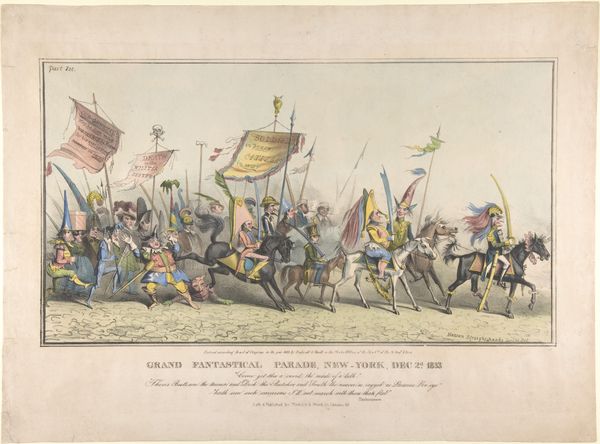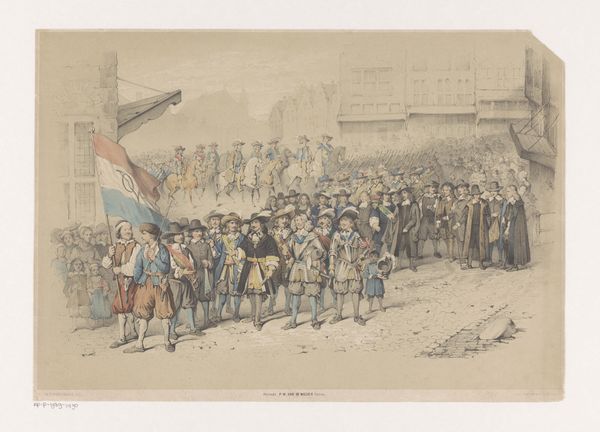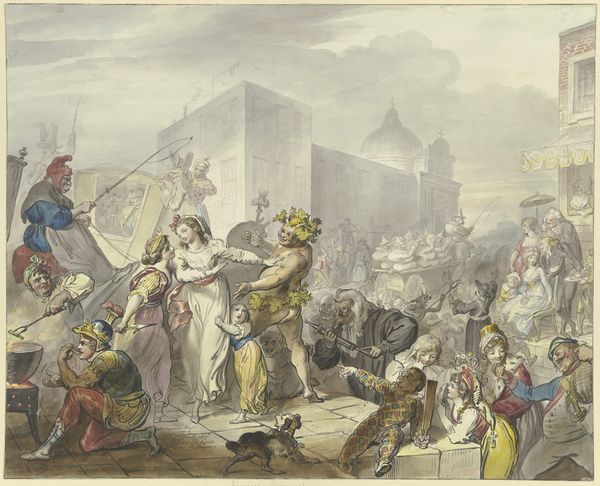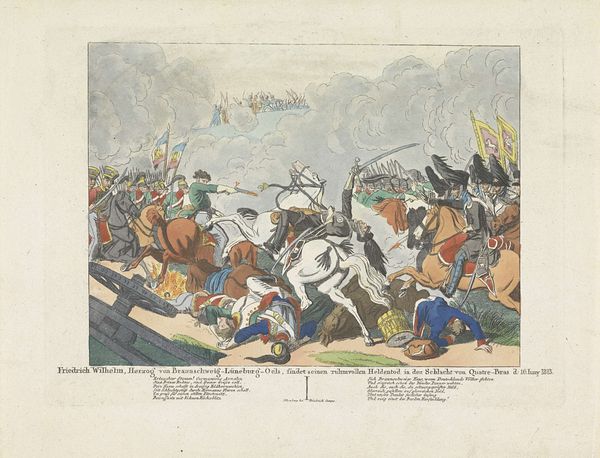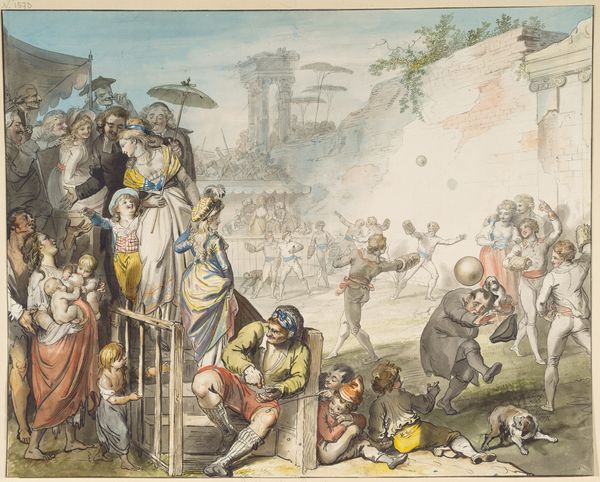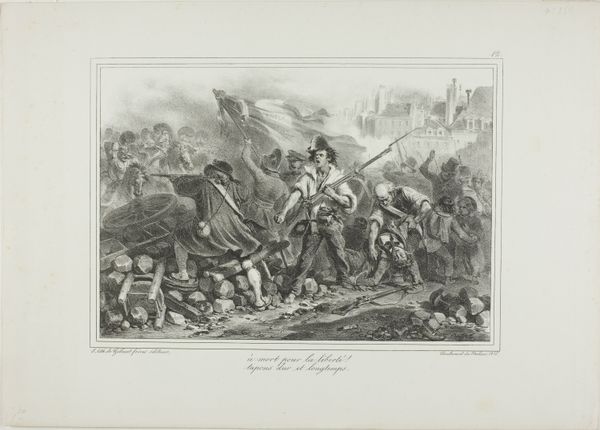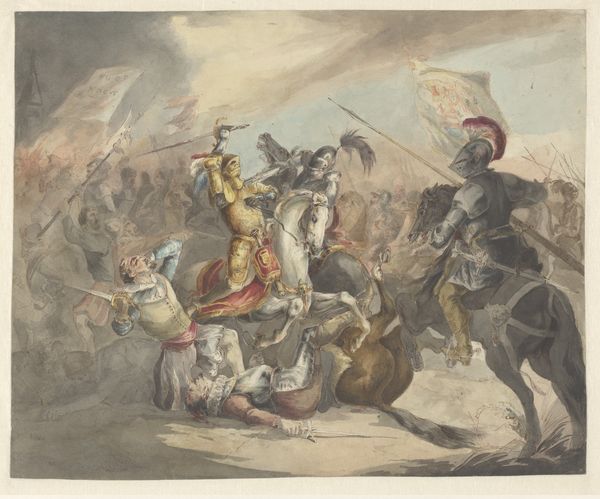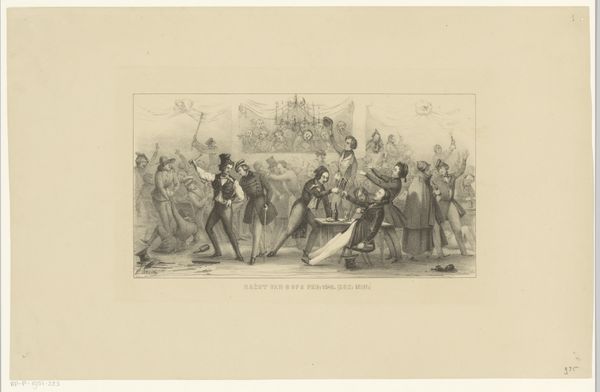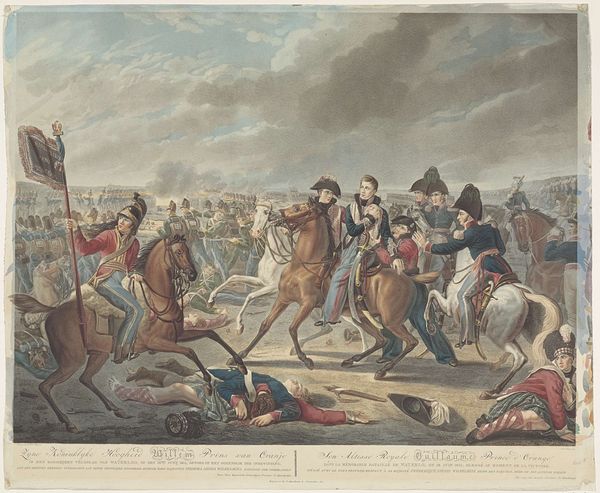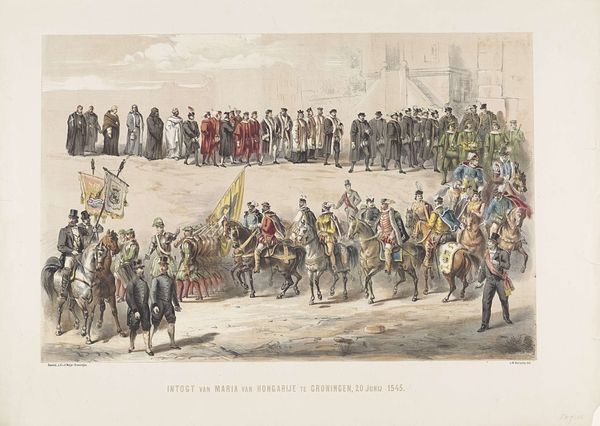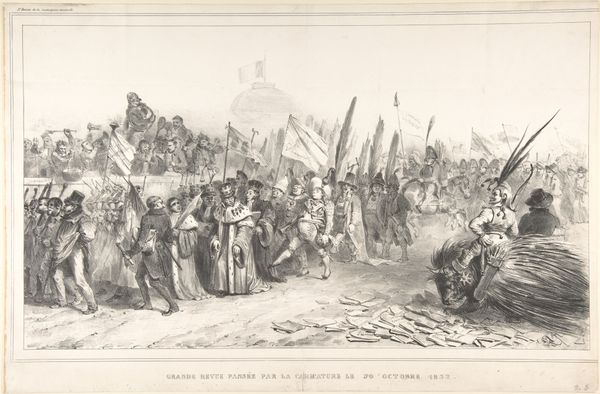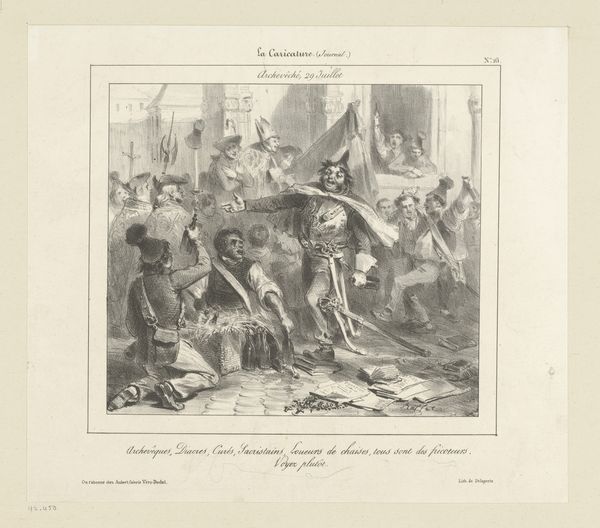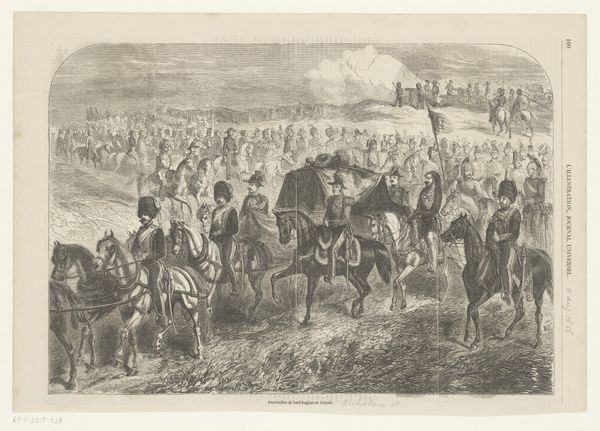
painting, print, watercolor
#
portrait
#
narrative-art
#
painting
# print
#
perspective
#
watercolor
#
cityscape
#
watercolour illustration
#
genre-painting
#
history-painting
#
academic-art
#
watercolor
#
realism
Dimensions: height 350 mm, width 505 mm
Copyright: Rijks Museum: Open Domain
Curator: This work by Arnz & Co., created in 1841, captures the entry of King Willem II into Leiden. It’s rendered in watercolor, giving it a detailed yet somewhat soft feel. Editor: The first thing I notice is the overwhelming sense of pageantry and power, but it also feels staged, somehow detached from genuine emotion. All those figures neatly lined up. Curator: The composition certainly emphasizes order. The use of perspective guides the eye towards the King, the focal point amidst this grand spectacle. It’s interesting how meticulously they documented such events, showcasing royal authority through public display. Editor: Yes, and I wonder about the intended audience and the message it conveys. Who was this celebration for, really? It’s striking how the everyday people are almost props in this tableau of power, separated from the procession, observing but not really participating, only those on horses behind are. Curator: Well, the King's arrival would have been seen as an important national event. Prints like these, especially watercolors that simulate paintings, were widely circulated. Think of it as an early form of political image-making. This portrays Willem II as a benevolent leader welcomed by his people, but the reality was definitely much more complicated. Editor: Exactly! There’s a curated narrative at play, reinforcing ideas about national identity, kingship and the established order. The inclusion of those children in the front almost acts as sentimental reassurance, suggesting a peaceful and prosperous future under royal rule, however, you can observe people wearing black clothes on the sides. I imagine there must have been people not necessarily too happy with Willem at the time of his arrival in Leiden. Curator: I agree, this watercolor serves not just as a record, but as a political statement carefully constructed for public consumption. Its historical context gives way to endless possibilities of readings. Editor: Precisely. Considering how different groups would've experienced and interpreted such spectacles opens up a much richer conversation about the socio-political dynamics of the time. A fruitful conversation indeed!
Comments
No comments
Be the first to comment and join the conversation on the ultimate creative platform.
